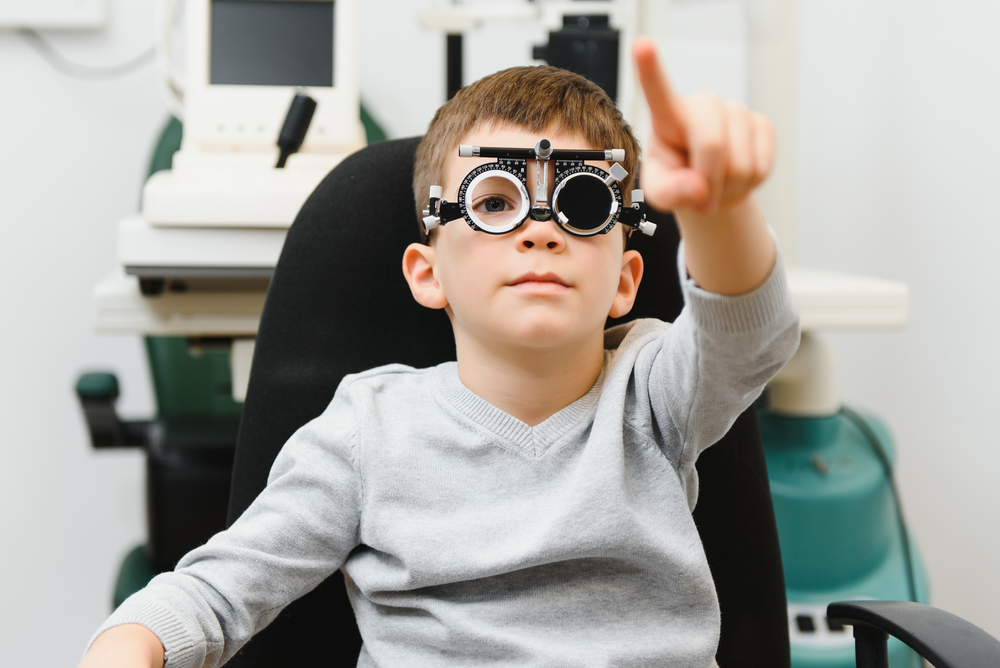
Clear vision plays a vital role in a child’s learning, development, and confidence. Regular pediatric eye exams help ensure your child’s eyes are healthy and their vision is functioning at its best. These exams can detect a range of common pediatric eye conditions, many of which may not be obvious without professional evaluation. Early diagnosis allows for timely treatment, helping to prevent potential long-term vision problems.
What to Expect During a Pediatric Eye Exam
During a pediatric eye exam at Westchester Eyes, our optometrist will use age-appropriate tests to assess your child’s vision and overall eye health. The exam may include checking visual acuity, eye alignment, depth perception, and focusing ability. We’ll also evaluate the health of the eyes using specialized equipment to look for early signs of conditions such as amblyopia, strabismus, or refractive errors. Our team ensures the experience is comfortable, engaging, and tailored to your child’s age, so they feel at ease while we gather important information about their vision.
Refractive Errors
Nearsightedness (Myopia), farsightedness (hyperopia), and astigmatism are the most common vision problems in children. These conditions occur when the eye’s shape prevents light from focusing correctly on the retina, causing blurry vision. Symptoms can include squinting, sitting too close to the TV, or difficulty seeing the board at school. Corrective lenses can often resolve these issues.
Amblyopia (Lazy Eye)
Amblyopia develops when one eye has significantly better vision than the other, causing the brain to rely on the stronger eye and ignore the weaker one. Without treatment, the weaker eye’s vision may not develop normally. Eye patching, or special glasses can help strengthen the weaker eye.
Strabismus (Crossed Eyes)
Strabismus occurs when the eyes are misaligned and do not work together. This can result in double vision, poor depth perception, and in some cases, amblyopia. Treatments can include glasses, prism lenses, eye exercises, or surgery, depending on the severity.
Eye Allergies
Children are not immune to seasonal or environmental allergies, which can cause red, itchy, watery eyes. While allergies do not typically harm vision, they can be uncomfortable and distracting. Eye drops and avoidance of triggers can help manage symptoms.
Color Vision Deficiency
Color blindness is often inherited and discovered during routine vision screening. While there is no cure, early identification can help parents and teachers make adjustments in learning environments.
Early Detection Starts Here
Many pediatric eye conditions can go unnoticed without a comprehensive eye exam. Detecting and treating these issues early can make a significant difference in your child’s vision, comfort, and academic performance. Our team provides thorough pediatric eye care to protect and enhance your child’s sight.
Schedule your child’s next eye exam at Westchester Eyes to ensure their vision is ready to support them in school, sports, and everyday life. Visit our office in White Plains, New York, or call (914) 567-4800 to book an appointment today.








